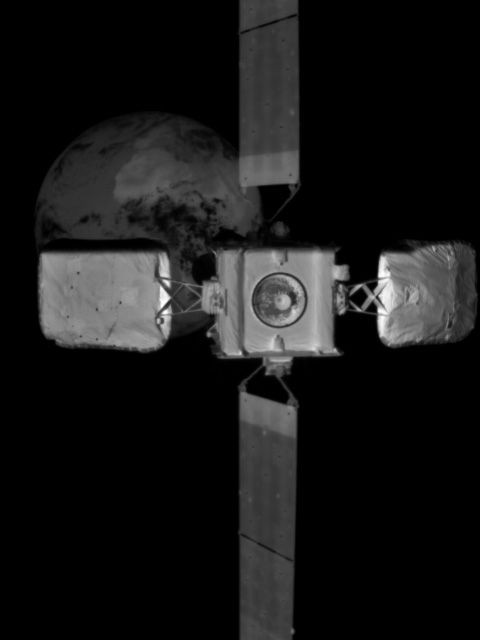On Monday, April 12, the maintenance spacecraft called Mission Extension Vehicle 2 (MEV-2) successfully docked with the commercial communications satellite Intelsat 10- 02 ( IS-10-02) 36,000 km above our heads. The goal was to expand its operations in orbit.
After years of service, most satellites end their retirement years in "graveyard orbits". You will find them about 300 kilometers above the geosynchronous orbit, positioned about 36,000 kilometers above the equator. Launched in 2001, the Intelsat-901 satellite was normally scheduled to enter this orbit due to a lack of fuel. Finally, he will be able to play extra time.
The company Intelsat, which manages this old satellite, has indeed teamed up with Northrop Grumman to design "guide dog" satellites. Named MEV-1, the jointly developed spacecraft was launched in October 2019 from Kazakhstan. Its objective was to come and settle on Intelsat-901 to allow it to continue its mission for five years. This successful maintenance operation was unheard of in the private sector at the time.
Following this "rescue mission", Northrop Grumman and SpaceLogistics LLC (a subsidiary of Northrop Grumman) highlighted the construction of a second maintenance vessel called MEV-2. This Monday, April 12, the "guide dog" satellite successfully docked with the Intelsat 10-02 commercial communications satellite (IS-10-02). MEV-2 was launched on August 15, 2020 on an Ariane 5 rocket.
The image below shows us IS-10-02 from the perspective of MEV-2 arriving at the dock. You can also appreciate the contours of the Earth in the background. The vehicle's wide-field-of-view infrared camera was able to film the satellite from a distance of about fifteen meters.
"This is the first time humans have seen this satellite since its launch in June 2004 “said Joe Anderson, Director of Mission Extension Vehicle Services at Northrop Grumman.

"With MEV docking -1 last February, we made history. We have created a whole new marketplace in orbit “said Tom Wilson, vice president of strategic space systems for the company. “We are now the only life extension service provider for satellites, operating not just one, but two mission extension vehicles. With these capabilities, we can enable entirely new classes of missions."
Whether MEV-2 or its big brother, these two satellites have a lifespan of about fifteen years . Thus, after their maintenance mission with Intelsat-901 and Intelsat 10-02, they could possibly come to the aid of other aging satellites.